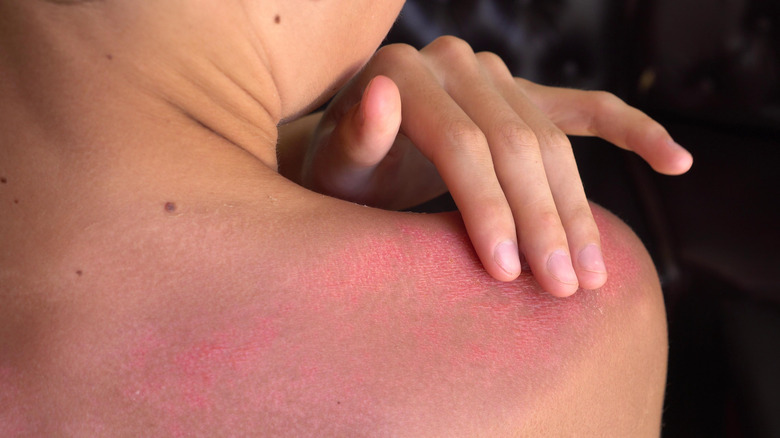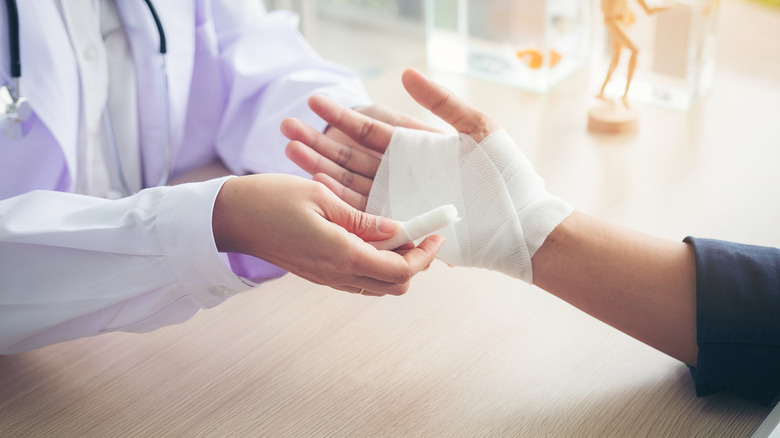Types Of Burns Explained
It usually only takes one afternoon of accidentally falling asleep under a blazing hot sun to teach most of us not to ever let that happen again. The redness, inflammation, and pain from a bad sunburn can last for days. But regardless of whether you get burned from not enough sunblock and too much sun, or from other common burn-causers, like radiation, chemicals, or electrical shock, treatment is very similar. The most important thing to know is how severe the burn is, and to determine that, doctors examine two things: how deep it is, and how wide it is.
First degree burns are superficial, affecting only the outer layer of skin, called the epidermis. The skin may become red, dry, and painful, but not blister — like a mild sunburn (via Stanford Health Care).
Second degree burns (also known as "partial thickness burns") involve damage to both the epidermis and the underlying dermis. The skin may be red, swollen, blistered, and painful.
Third-degree (or "full thickness') burns have killed the skin cells all the way down to the underlying fatty tissue, muscle, or even bone. This type of burn usually isn't painful, since the nerve endings have been destroyed.
Serious burns require medical attention
For first degree burns, treatment is simple and can be done at home. Quickly cool the burnt area by running cool (not ice cold) water over it for 10 minutes, or, if that's too painful, soak the burnt area in lukewarm water. Then apply aloe vera or antibiotic cream, and cover with gauze or a non-stick bandage.
Treatment for a moderate second-degree burn is the same, but more serious second-degree burns may need medical attention. Thomas Beachkofsky, a board-certified dermatologist, explains "When the extent of blistering is smaller than the size of your hand, many second-degree burns can also be cared for at home. Second-degree burns that are larger than the palm of your hand require emergency attention" (via Allure).
Third-degree burns always require medical attention, which may include lengthy hospital stays, rehabilitation, and skin grafts (via Verywell Health). Beachkofsky adds "When a person gets a third- or fourth-degree burn, the skin will appear charred and can appear white, brown, or black. In these situations, the risk of scarring, infection, and pain is high, and emergency attention is recommended."


